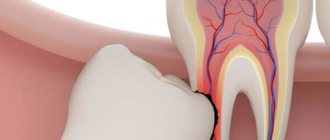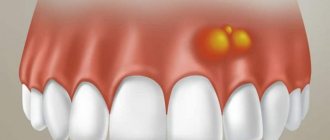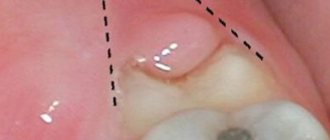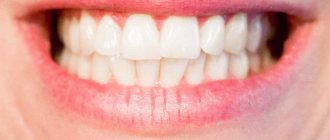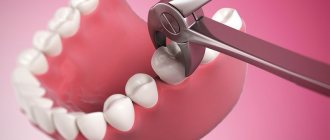Tooth extraction in dentistry is divided into simple and complex. When extracting a tooth with one root, such manipulation is considered simple. If the tooth has a complex root with several branches, then the procedure for removing it will be complex and is carried out using special tools and techniques.
In what cases is dental surgery difficult?
Complex manipulations regarding tooth extraction include the following situations:
- with disconnected roots that are excessively curved inward or directed in different directions;
- when the problem tooth is located in the affected bone;
- in the complete absence of a crown, when there is nothing to grab onto with forceps;
- if a filling was previously installed in the tooth, which can crack under the mechanical influence of forceps;
- when the tooth is impacted or dystopic;
- removing the "eight"
These are the main clinical features in which it is impossible to get rid of a diseased tooth using a standard simple procedure. Moreover, in each specific case the reasons for complex extraction may be individual.
The dentist answered the most common questions
What could be more ordinary than brushing your teeth?
It would seem nothing, however, this activity also raises questions.
Do you need mouthwash and dental floss?
How can you tell if your dentist is pushing unnecessary procedures?
Why is visualization of work quality important?
Users of Apteka.ru asked about this, and their questions were answered during the live broadcast by Svetlana Gaek, dentist, head of a network of dental clinics.
How do you know that your dentist is not giving you unnecessary, expensive procedures or appointments?
Ask the doctor to explain what procedures he is going to do, and if possible, take a clinical photograph so that you can see with your own eyes exactly how the tooth is damaged.
Make sure you understand the treatment process. Of course, something can always go wrong, so don't be afraid to tell your doctor about it and perhaps come for an additional consultation.
Clinical photography is also very important: it is a way to monitor the treatment process at all its stages. Photography helps plan treatment and show the patient existing disorders.
Is it true that tooth decay is contagious?
No, tooth decay is not contagious. You can only become “infected” by bad habits: for example, lack of oral hygiene.
Why does a healthy tooth react to cold or hot food? Can this be cured?
This is a normal reaction. If there is no pain that lasts for several days, then there is no reason to worry. If the pain continues, you should consult a doctor
Why do teeth change color?
Over time, the enamel wears off. In addition, teeth darken from smoking, drinking coffee, alcohol, and acidic foods.
Also, the tooth can suddenly darken if the inflammatory process has reached the nerve.
Is it necessary to remove wisdom teeth?
Wisdom teeth do not have to be removed. If they are located in the dental arch, grow straight and healthy, and do not cause inconvenience, then they do not need to be removed.
What to choose: filling or inlay?
Depending on the tooth decay. If it is destroyed by less than half, then you need to put a filling, and if more - an inlay or a crown. The location of the destruction and the price also matter: an inlay is more expensive than a filling.
Why do my gums bleed? Is it dangerous?
If your gums are bleeding, you should consult your dentist.
Most often this is due to poor hygiene, unhealthy lifestyle (particularly smoking) and diseases of the gastrointestinal tract.
The quality of water also matters: if you know that tap water is bad and hard, then use filtered water to brush your teeth.
What's wrong with a malocclusion, besides aesthetic problems?
An incorrect bite makes it difficult to brush your teeth. Where teeth are particularly close to each other, infections or pathologies of the mucous membrane can develop.
How do you know when a tooth can be cured and when it’s time to remove it?
The patient must decide this for himself together with the doctor. One situation can have many solutions. Of course, tooth extraction costs less than treatment, but the consequences should be taken into account. Even if finances do not allow you to treat a tooth, the clinic can accommodate you and offer an installment plan.
Is it necessary to cover the exposed necks of teeth with a filling?
If they don’t bother you and it doesn’t bother you, then it’s not necessary. However, it is better to close it to avoid nerve damage.
If there is a cyst on a tooth, is it necessary to remove it?
A dental cyst can only be accurately diagnosed after its removal. Cyst formations respond well to treatment. They don't bother you until they become inflamed, so it's worth having all your teeth checked by a dentist.
What drinks and foods are harmful to teeth?
In fact, coloring foods are harmful: coffee, tea, soda, bright berries and fruits. To reduce their impact on tooth enamel, you need to brush your teeth right away.
Acidic foods are also harmful: tomatoes, citrus fruits, white wine.
How to get rid of fear of dentistry?
Through consultation. If you are afraid of procedures, you can ask the doctor to show the devices, explain what procedures he will perform, and why. After this, the fear should decrease. To know for sure that you have come to a good clinic, inspect its equipment.
Cases when complex surgery is necessary
It often happens that the only possible way to get rid of a defect formed by a complex tooth is to remove it.
Indications for this type of procedure are as follows:
- the formation of periodontal tumors and edema, accompanied by soreness of the mucous membranes and gums;
- numbness of the face resulting from damage to the nerve endings of a diseased tooth;
- with an increased risk of curvature of adjacent teeth;
- in the presence of diseases caused by improper positioning of the tooth.
Surgeries to remove problematic teeth are contraindicated for those who suffer from pathologies of the cardiovascular system, with poor blood clotting, patients who have undergone a hypertensive crisis, in the presence of infectious or viral processes in the body, as well as other individual contraindications.
We delete and do not resist
Despite the rapid development of methods in dentistry, there are still situations when it is necessary to agree to tooth extraction. Moreover, most often the procedure must be carried out urgently in order to prevent the spread of infection and relieve pain. Unconditional indications for tooth extraction are:
- An acute form of osteomyelitis caused by a diseased tooth. This is a severe bone lesion that even affects the bone marrow. This state of affairs is dangerous for your health. The disease is accompanied by acute, unbearable pain and body temperature up to 40 degrees.
- Advanced periodontitis. The rotting of the root membrane is very difficult to stop if you try to save the tooth. In this case, the situation is dangerous because the rotting zone can increase and affect neighboring areas of the jaw.
A tooth can also be removed if it is the cause of other diseases: neuritis, phlegmon, lymphadenitis, sinusitis, etc. In addition, there are non-infectious indications for removal . The doctor may suggest removing a tooth if:
- It grows out of line and interferes with the formation of a correct bite. Sometimes timely tooth extraction allows a child to return a beautiful smile without any braces. Sometimes it is necessary to combine these types of treatment.
- It is located at the site of fusion of a broken jaw. If the jaw is injured, surgical intervention is required for its proper fusion. A tooth located at the fracture site may interfere with the process. Once the jaw has been restored, a new tooth can be grown in place of the hole if you deem it necessary for functional or aesthetic reasons.
Preparing for dental surgery
If a patient is faced with the removal of a complex tooth, then an experienced doctor will not perform such manipulations without prior preparation. An x-ray is required before the operation. This is necessary to clarify the location of the tooth in the bone, as well as to evaluate the tissues surrounding it.
When a patient has an inflammatory process, it is first cured by taking antibiotics.
Complications after pulling out problem teeth rarely occur, but to avoid them, the procedure should be trusted to a highly qualified doctor.
Wisdom tooth – “secret agent”
Few people know in detail what kind of tooth this is and what its “wisdom” is.
And everything is quite simple - he is called that because he/they appear much later than the others, at the age when a person’s mental development is considered complete, and the acquisition of wisdom begins. It does not have a “milk” predecessor, and it grows only after the final formation of adult bone tissue. In our time, it has been proven: the wisdom tooth, also known as the eighth tooth, is a rudiment, a relic of evolution. Unlike ancient humans, our jaw is shorter, and there is simply no room for it. That's why Western dentists insist: it must be removed as soon as it begins to appear. However, in any case, if the “eight” causes pain, your best assistant is the dentist! After looking at the x-ray, he will tell you what to do next. If everything is fine with the newly erupted tooth, the dentist will prescribe a course of treatment that will relieve inflammation.
what to do with the eighth teeth based on the patient’s complaints and clinical picture. Problems with even one or two elements disrupt the normal functioning of the entire dental system. Pain appears when opening the mouth and chewing, sometimes the bite and position of the incisors change.
So, if the eighth tooth is problematic, then the surgeon will perform an operation to remove it.
Wisdom teeth that have not erupted or are in the wrong position make removal more difficult and require the use of a complex extraction method.
We remove the nerve, save the tooth
Removal of the nerve - depulpation - is necessary when:
- As a result of injury, the tooth enamel is chipped so badly that the nerve is affected.
- pulpitis was detected. Inflammation of the nerve can begin as a result of advanced caries.
- you are preparing for prosthetics and installation of orthopedic structures.
Removing a nerve today no longer requires the use of arsenic, and modern anesthesia literally works miracles. Not only the capital, but also Samara can boast of modern clinics where you can get rid of the nerve without hassle and pain. How much does it cost? The prices are quite reasonable!
Yes, after removing the nerve, the tooth will lose sensitivity and blood supply. But when the nerve disappears, the painful reaction to all irritants, including sweets, cold and hot, will also go away.
In any case, the dentist advises removing the nerve only when it is no longer possible.
How to remove complex teeth: basic techniques
In dentistry, various methods are used to eliminate a complicated tooth, the essence of which depends on the instruments chosen for manipulation:
- removal using forceps. Compared to
in other ways, this is considered the most gentle. This technique is used in cases where the integrity of the crown is preserved. The surgeon grabs the crown with forceps and loosens it in a circular motion until the tooth root ruptures from the alveolus, after which he pulls it out; - elevator extraction. If it is located outside the dentition, it is impossible to pull it out with ordinary forceps, then this technique is used. The instrument is inserted into the periodontal fissure and rotated, as a result of which the ligaments are torn. The tooth is not pulled out of the hole, but squeezed out;
- removal with a drill. This method is used to pull out teeth with multiple roots. First, the roots are separated using a drill and then each piece is removed separately. If a resorcinol-formalin filling is installed on a tooth, then a drill is also used to pull it out.
Which method is the best? Each has certain characteristics and is selected based on the condition of the tooth, the number and depth of its roots.
Dystropic tooth: indications for removal
A tooth with an incorrect location in the dentition relative to its neighbors is called dystrophic. It can take the place of another, spontaneously turn, change the angle of growth, which significantly interferes with neighboring teeth and leads to the formation of a malocclusion.
Indications for extraction of a dystrophic tooth are:
- swelling of the gums and pain;
- numbness of the face due to damage to nerve endings;
- pronounced curvature of adjacent teeth;
- periodontitis or chronic pulpitis;
- when, due to a problem tooth, it is impossible to perform prosthetics;
- if a dystrophic tooth is the cause of periostitis or osteomelitis.
The removal process itself is similar to the procedure for removing an impacted tooth.
What else can pain indicate?
Severe pain after removal may indicate the development of complications. Pulsating pain that radiates to the ears and submandibular lymph nodes is not normal. The most common causes of complicated postoperative pain are the following factors:
- Violation of treatment protocol. Unfortunately, mistakes do occur, especially in the removal of complex teeth. The techniques and approaches used in different clinics may differ from the standards. Errors include leaving fragments of materials or a splintered tooth root behind.
- Alveolitis. Occurs in the absence of a blood clot. The disease complicates natural healing and interferes with normal tissue regeneration. That is why doctors do not recommend touching the wound with your tongue or rinsing your mouth intensively.
- Dry hole. One of the common complications and the cause of long-term pain after tooth extraction. Despite the moisture of the mucous membranes, bone tissue is visible at the bottom of the wound opening. This problem is typical for smokers during periods of hormonal surges. The doctor seals the wound with a swab containing medication.
- Trigeminal neuritis. Long-term pain persists when a tooth in the mandibular row is removed if the trigeminal nerve is damaged during the manipulation. Damage may be accidental due to structural anomalies or multiple branching of nerve structures.
The likelihood of complications developing is low if the removal protocol, medical recommendations after extraction, and timely response to alarming manifestations are followed.
Extraction for acute and chronic inflammation
Quite often, the removal of a problematic tooth is accompanied by the presence of purulent foci, gum inflammation or periodontitis. In such cases, the doctor prescribes intensive therapy with the use of antibacterial drugs, and only after the inflammatory process has been suppressed is surgery to remove the tooth performed.
There are also situations when a tooth needs to be removed urgently. Only an experienced, highly qualified doctor can perform surgery in such cases.
Complex tooth extraction: when is it necessary?
Clinical indications for which the dentist prescribes complex tooth extraction are as follows:
- the presence of an unerupted wisdom tooth in the jaw;
- if the figure eight is incorrectly positioned;
- when removing molars with two or three roots;
- with a severely damaged or twisted root;
- in case of fusion of the tooth root with the jaw bone tissue;
- in the presence of a fistula or cyst;
- with excessive fragility of the crown due to treatment with resorcinol-formalin composition.
The operation itself consists of several stages and is carried out under the influence of powerful anesthetics.
How does a postoperative wound heal?
How long the area hurts after tooth extraction depends on many factors. The healing process after tooth extraction is a complex and lengthy process. Removal occurs with a rupture of the dentofacial connection, namely the connection with the alveolar process and the jaw bone.
The recovery process lasts about two to three weeks. Much depends on the surgical protocol, the clinical situation and the characteristics of the body.
Main stages:
- Formation of a blood clot. Forms 1.5-3 hours after extraction. The function of the clot is to protect the wound area from pathogens and secondary infection.
- Active tissue regeneration. The affected mucous membranes are restored, after 3-4 days swelling and inflammation decrease.
- Formation of granulation tissue. After 4-6 days, granulation tissue forms on top of the clot - the basis of a new epithelial layer.
- Granulation proliferation. After a week, the granulation tissue grows, completely covering the socket.
Already on the eighth to tenth day, the wound is completely healed and by the end of the second week a new epithelial layer is formed.
After two weeks, bone tissue begins to renew. After six months, the bone tissue in the area of removal becomes completely healthy.
Stages of complex tooth extraction
Complex removal surgery is carried out only after x-ray diagnostics, during which the shape, length and depth of the roots are determined. If the patient has inflammation, he is prescribed treatment with antibacterial drugs.
Technique of the procedure
Wisdom tooth removal is carried out in the following order:
- the gum is separated from the neck of the tooth by making an incision in the soft tissue;
- if necessary, the interroot septum is sawed or sections of bone tissue are cut out at the location of the tooth;
- then, using forceps, the tooth is rocked and pulled out of the socket;
- Sutures are placed on the gum.
Painkillers are not required after the procedure, since the effect of the anesthetics is still present.
Clinic doctors
Modern tooth extraction without pain and shock!
And this is not an exaggeration. Even the most complex tooth extraction procedures, with the right approach, will be comfortable and quick.
The tooth extraction procedure at DentaBravo is painless, takes an average of half an hour and brings you great relief. And right in this section you will find answers to your questions. Read and get rid of your fears!
Removal (extraction) is one of the most common operations in dentistry. As a rule, it consists of the following stages:
- taking an anamnesis (the doctor finds out whether the patient is allergic to medications, whether the person suffers from high blood pressure, heart disease and some other diseases);
- anesthesia;
- preparing the tooth for extraction;
- extraction of a tooth from the alveolus;
- medicinal treatment of the hole.
When is it necessary to remove teeth?
Molar tooth extraction can be performed for planned or emergency reasons. In the first case, teeth are removed that cannot be treated, are incorrectly located and interfere with the growth of other teeth, or injure the mucous membrane of the oral cavity. Emergency removal is necessary if a purulent inflammatory process develops in the periodontium, as well as in the presence of a number of diseases (periostitis, maxillary abscess, etc.)
Doesn't tooth extraction hurt?
Modern dentistry has all the means to remove a tooth absolutely painlessly. The most commonly used local anesthesia is an injection. Sometimes anesthesia is carried out in two stages: first, the doctor treats the gums with a solution or gel that reduces sensitivity, then the anesthetic solution is injected into the gums using a syringe.
What is complex removal?
This is a surgical operation that is performed if the tooth cannot be removed in the usual way. Complex tooth extraction in dentistry is necessary when it comes to unerupted (impacted) and incorrectly positioned (dystopic) teeth. It is difficult to remove the root of a tooth, as well as a tooth fused with bone tissue. The removal of a broken tooth can also be included in this category.
How long does it take to remove a tooth?
The tooth extraction procedure takes about fifteen to twenty minutes on average. In some situations, this may require more time (for example, if you have to remove a tooth in parts), but usually no more than thirty to forty minutes. Sometimes removal can take up to three hours. It all depends on the specific clinical case.
How many teeth can be removed at one time?
It is impossible to give an exact number. Usually no more than one or two teeth are removed at a time. If the teeth are mobile and the removal is simple, more can be removed. For complex extractions, it is not recommended to remove more than one tooth.
How long will it take for gums to heal?
If the tooth extraction operation is carried out correctly, the gums heal quite quickly - this may take about one week. Sometimes, if after extraction the tooth socket is not filled with a blood clot, it takes 2-3 weeks for complete healing.
How long after can I eat after tooth extraction? You are allowed to eat no earlier than two to three hours after surgery, and you can drink after an hour. However, during the first 24 hours, it is recommended to eat only soft or liquid foods to avoid additional injury to the gums. On the day of surgery, you should avoid hot and cold foods, as well as drinking alcohol.
How to care for your teeth after tooth extraction?
After tooth extraction, it is not recommended to rinse your mouth. This is due to the fact that during the rinsing process a blood clot may fall out of the hole, which can lead to inflammation. You need to brush your teeth very carefully, without touching the wound.
Is an examination necessary the next day after tooth extraction?
Usually this is not required. However, if a complex removal was performed, the doctor may order a follow-up examination. Then the next day you will have to visit the dentist to make sure that the procedure was successful, the socket is in order and there are no complications. If a visit to the doctor is not planned, but you have cause for concern, do not hesitate to go to see a specialist.
How soon can prosthetics begin?
Typically, prosthetics begin no less than one month after tooth extraction. If you plan to install a fixed bridge, it is enough to wait about three weeks. In those cases where dental implantation is proposed, it is advisable that more than a month pass.
How much does tooth extraction cost?
The cost of this service depends on the complexity of the procedure. For example, if a simple removal of a front tooth is required, dental manipulation will cost the patient much less than if it is necessary to remove an unerupted “wisdom tooth” from the mouth. The cost of tooth extraction in our dentistry can be found here.
The healing process of the hole after a complex removal
Basically, tissue healing occurs after 7-10 days. It should be noted that this period is quite difficult for the patient. As soon as the effect of the anesthetics stops, aching pain immediately occurs. To eliminate it, you should take pain medication.
The swelling and redness that appears will decrease every day. If there is slight itching in the socket area, this indicates intensive tissue restoration. Removal of sutures after healing is not required since they “dissolve” on their own.
During the regeneration period after removal, it is very important not to disrupt the integrity of the blood clot formed in the socket. To do this, you need to follow a few simple rules:
- during the first 2-3 hours after surgery, do not consume any drinks, much less food;
- Under no circumstances should the well be heated, cleaned or washed;
- do not rinse your mouth for 24 hours after removal;
- When eating food, you need to chew it on the opposite side in relation to the hole.
If you follow these recommendations, the tissue will soon recover without complications.
The site of tooth extraction hurts after a week, what should I do?
The holes in which the extracted teeth were located are usually completely healed by the end of the first week. Final healing still needs to wait, but the pain should have passed during this period. If, after a week, the area continues to hurt after tooth extraction or any other symptoms appear, such as bleeding, the patient urgently needs to see a doctor.
Under no circumstances should you try to relieve pain on your own. If it continues to bother the patient, this may indicate the development of inflammation or an abscess process in the gum. If they are not eliminated in time, the consequences can be very serious.





